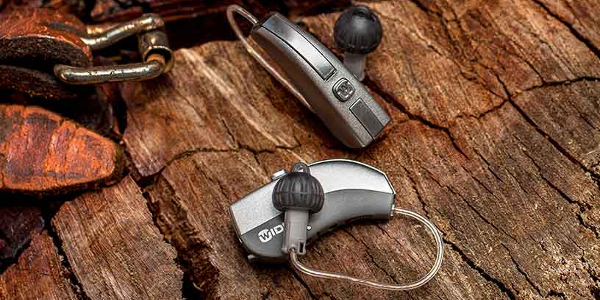Want hearing aids that connect to your smartphone and have directional microphones? Or what about hearing aids that stream music, movies, and conversations directly to your ears?
Today’s hearing aid technology was only a dream a few years ago–now it’s reality. There are literally hearing aids to help almost every patient, no matter what your listening needs or budget.
Here are some of the exciting advances now available:
Artificial Intelligence (AI) in Hearing Aids
Today’s hearing aids don’t just make sounds louder—some advanced options are equipped with technology called artificial intelligence (AI) that helps target the sounds you need and want to hear, making those sounds more prominent.
This technology is able to “learn” from experience and can adjust in complex listening situations. It’s something many of us are already taking advantage of, whether we realize it or not, when we use our smartphones and a variety of phone applications.
Now, AI is bringing a wide range of capabilities to the technology that helps you hear. According to the Hearing Industries Association, hearing aids built with AI can detect your environment and learn your preferences for listening via machine learning.
For example, when seated in a noisy restaurant with a friend or spouse, hearing aids with AI can automatically shift to provide more comfort or more clarity to help you hear and communicate your best. If desired, these hearing aids can remember your preferred settings and automatically adjust when you enter locations you frequently visit.
AI hearing aid features recently released include step trackers, an engagement tracker, and fall detection.
Newer models of hearing aids may also connect to other smart devices so you can benefit from seamless TV and computer streaming, doorbell notifications, and smartphone notifications. There’s even a “Find my hearing aid” app!
Bluetooth Hearing Aid Technology
When your hearing aids are Bluetooth-compatible, it allows you to connect with specific Bluetooth-enabled devices, such as your smartphone or iPad. In fact, Bluetooth technology has made it possible for your phone to ring and for you to hear directly through your hearing aid(s). This allows for convenient hands-free communication, as well as hearing in both ears, which results in a much clearer signal than when using a phone on one ear.
Most hearing aid manufacturers now have hearing aids that utilize Bluetooth technology compatible with Apple and some with Android phones. More sophisticated hearing aids have a streamer built-in, so no additional devices, streamers or wires are necessary in order to connect from your hearing aids to other devices, like your phone. You just have to pair the devices, as long as they are compatible.
Digital Adaptive Directional Microphones
Newer digital hearing aids typically include two microphones, helping detect which direction a sound is coming from. Adaptive directional microphones are designed to prioritize speech coming from in front when other sounds may interfere. This may help you hear speech better in a complex listening situation. Advanced hearing aids are actually equipped with adaptive microphones that follow the source of the sound, allowing you to keep track of conversations even as someone’s voice moves, and resulting in a more natural listening experience.
Rechargeables
Whether you’re interested in rechargeable hearing aids because you have difficulty handling traditional hearing aid batteries, or you want a “greener” power option, most of the major hearing aid manufacturers now offer rechargeable hearing aid options.
In general, rechargeables:
- Offer technological advances beyond the battery, including improved signal processing and more automatic adjustments. These help you hear better and more comfortably in complex listening situations, like in the car, social settings, talking on the phone or watching TV. Most of this advanced technology is available in non-rechargeable options as well.
- Can be more convenient for patients who struggle with vision and/or dexterity when replacing tiny traditional hearing aid batteries.
- Use either integrated lithium-ion batteries or field changeable silver-zinc batteries. These batteries can hold a charge for around 24 hours of use. Batteries require re-charging every night by placing them in a charging station. If you stream a lot of audio, the batteries may not last a full 24-hour day.
- May not be as convenient if you travel regularly or don’t have access to electricity which is required for most recharging bases.
- Require keeping the rechargeable contacts clean and dry.
Specific hearing aid manufacturers offer features to appeal to different consumers. In most cases, the cost of rechargeables and traditional hearing aid batteries over time are about the same but can be more with rechargeables if internal battery replacement is required outside of the repair warranty.
Your initial investment when choosing rechargeable will include the charger and the cost of the first rechargeable battery or batteries. The rechargeable battery life will depend on the type of rechargeable battery your hearing aids use.
The annual/routine cost of replacement rechargeable batteries is currently about the same as disposable batteries. In some cases, manufacturers will charge a regular out-of-warranty repair cost any time the rechargeable battery needs replacement, which may vary from $250-350 per repaired device.



